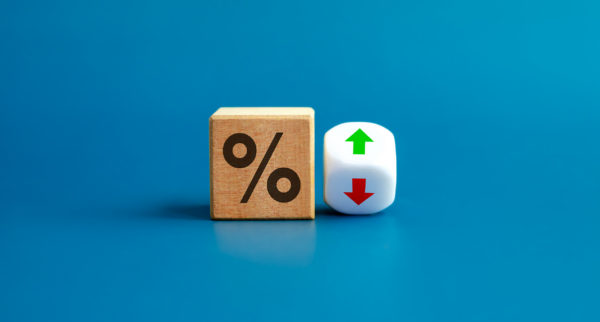Credit Card Interest Calculator
The CardRatings credit card interest calculator offers a ballpark figure using a daily periodic rate calculation. It assumes a consistent APR and balance throughout the billing cycle. Your situation may vary depending on several factors including additional purchases or payments made throughout each cycle.
Enter your outstanding balance, your card’s annual interest rate (APR), and the number of days in your billing cycle. After inputting these values, the calculator will provide you with an estimate of your monthly interest charges, empowering you to make informed decisions about managing your credit card debt.
When used responsibly credit cards can be incredibly valuable tools. If you're only paying your minimum monthly balance though, interest charges can quickly get out of control.
This can especially be true if you have a rewards credit card. It's easy to overlook interest charges when you're racking up miles, points or cash back each month; however, if you aren't heavily paying down your balance, interest charges can quickly offset any rewards you might earn.
The most obvious way to avoid paying interest charges is to pay off your credit card balance in full each month, but we get that this isn't always a realistic option. Even paying more than the minimum balance due can be difficult sometimes.
If you are able, though, do your best to pay your statement in full each month, or at least pay off as much of your balance as you can. And to be proactive, it's best to not charge more to your card each month than you know you can afford to pay off when your statement rolls around. But again, we get this isn't always feasible, and sometimes, things happen.
One motivating factor to pay your balance off is to actually see how much extra you're paying each month in interest charges. The CardRatings credit card interest calculator is an easy way to do this.
Frequently asked questions
How does credit card interest work?
How to calculate credit card interest
Banks use a couple of different methods to calculate interest; generally, either a Daily Periodic Rate or a Monthly Periodic Rate. You can check your cardholder agreement or a statement to understand which your bank uses. The CardRatings credit card interest calculator uses the Daily Periodic Rate method to estimate the interest you'll pay.
How to calculate interest based on a monthly periodic rate method
- Locate your balance and current APR on your credit card statement. For example, let's say your balance is $1,000 and your APR is 16.99%
- Divide your APR by 12 (for the 12 months of the year): 16.99% / 12 = about 1.42%
- Multiply that number by your current balance. Remember, to multiply percentages, you have to move the decimal two places to the left. For this example that means multiply $1,000 (your balance) by .0142 to get $14.20 interest for that month
How to calculate interest based on a daily periodic rate method
- Locate your balance, current APR and number of days in your billing cycle on your credit card statement. Again, let's stick with a balance of $1,000 and an APR of 16.99. Let's say your billing cycle was 30 days.
- Divide your APR by 365 (for the 365 days of the year): 16.99% / 365 = about .0465% for your daily APR
- Multiply your daily APR (.0465%) by your balance ($1,000) to find your daily periodic rate. In this case, $1,000 x .000465 (we moved that decimal point because it's a percentage) = $0.47 for your daily periodic rate.
- To find the interest due, multiply your daily periodic rate by the number of days in your billing cycle; therefore, 30 days x $0.47 = $14.10 in interest.
- Keep in mind: With the daily period rate, your balance will increase each day by the amount of interest charged for the previous day – it's called compounding interest. For instance, based on our example above, if your balance was $1,000 on day one, it will be $1,000.47 on day two and so on. The CardRatings calculator takes this into account.
The methods above are intended to give you a general idea of the process. They assume you aren't making payments or additional purchases throughout the billing cycle. Credit card issuers could use a daily average balance calculation, which means they average your balance out over your billing cycle to find your interest due. Or, they could use a daily balance method that individually considers your balance on each day of your cycle to find the amount of interest due, in which case, making a payment toward your balance at the beginning of a billing cycle could actually save your money.
How to use the credit card interest calculator
There are three bits of information that are necessary to see how much interest you'd pay based on your monthly payment, or in a specific period of time:
Step 1: Enter your current balance on your credit card. Find the total amount of your current balance on your credit card statement and enter that amount in the first field. Do not include a dollar sign or commas in your entry, but you can include a decimal.
Step 2: Enter the current interest rate charged by your credit card. Your interest rate may be expressed on your statement as APR, or annual percentage rate. This may have changed since you first signed up for the card, so check your latest statement for the current rate. Enter the percentage interest rate without adding a percent sign.
Step 3: Enter the number of days in your billing cycle. You can find that on your statement.
Now click on the "Calculate" button and in the dark blue bar just below you'll see the amount you'll pay in interest for the month.
What is variable APR?
Credit card’s often feature variable APRs (annual percentage rates). “Variable” means that your card’s APR isn’t set, and can change. How and when the rate can change will be spelled out in your cardholder agreement.
Typically speaking, credit card issuers set their variable rates at a certain percentage plus the current prime rate. The prime rate is the interest rate used by commercial banks. It is based on an interest rate known as the federal funds rate, which is set by the Federal Reserve.
Most credit cards feature a credit score range, with more favorable rates being reserved for those with higher credit scores. For example, someone with excellent credit might get a variable APR that is the prime rate plus 10%, while someone with good credit might get the same credit card but have an APR of the prime rate plus 20%. In both cases, an increase in the prime rate can result in an increase in the variable APR.
Learn more about variable APR.
What is the average credit card interest rate?
The average credit card interest rate as of 4/1/24 was 24.30% according to a quarterly CardRatings.com study.
When do you pay interest on a credit card?
Thanks to your credit card grace period, that is, the time between your credit card statement closing date and when your bill is due, credit card interest does not accrue right away. That said, you have your grace period, generally around 21 days, to pay off your balance before interest charges apply. The due date on your statement is the end of your grace period. If you’ve not paid your balance by this date, this is when interest will start accruing.
How do you lower your credit card interest rate?
The better your credit score, the more likely you’ll earn a favorable interest rate. That said, one of the best ways you can lower your credit card interest rate is to maintain a good credit score. You can do this by paying your balance on time, carrying a low balance, and keeping a low credit utilization ratio.
You can also take advantage of promotional APR offers. If you need to make a large purchase and need extra time to pay it off, consider a 0% intro APR credit card which offers an interest-free promotional period on purchases before regular APR applies. Alternatively, you could take advantage of a balance transfer offer which would allow you to transfer a high-interest debt to a card offering 0% intro APR, thus giving you time to pay off your balance interest-free.
Finally, you can ask your credit card issuer to lower your rate. There’s no guarantee that this route will prove successful, buf if you have demonstrated responsible spending habits, your lender may be willing to consider your plea.
How do you avoid interest charges on credit card?
As we mentioned above, the best way to avoid paying credit card interest is to avoid carrying a balance altogether, but again, we get this isn't always possible.
If you can't pay off your balance in full, do be sure to try and pay it down as much as you can, and if that's still not feasible, consider transferring your balance to a balance transfer credit card with a 0% intro APR period to give yourself some more time.
The CardNamediscontinued, for example, offers 0% intro APR on balance transfers for 18 months. Eighteen months is a solid period of time to pay down a balance while saving yourself some money on interest charges. Just be aware though that once the intro period expires, standard RegAPR APR applies, so it's important to pay off your balance in full within the intro time frame to avoid paying any interest once it expires. Citi is a CardRatings advertiser.
This card also earns up to 2% cash back – unlimited 1% cash back when you buy, plus an additional 1% as you pay for those purchases. To earn cash back, just pay at least the minimum due on time.
Keep in mind though that these new purchases will accrue interest if you're not paying them off in full each month, so if your primary purpose is to avoid paying interest fees, and you can't pay off your balance in full each month, it might be best to just use this card for its intro 0% balance transfer APR offer until you can get your finances under control.
It's also important to note that there is a balance transfer fee: BalanceTransferFees This is to be expected with balance transfer credit cards though.
If you're worried about running up new interest charges with your purchases, Citi also offers another option which might make more sense for you: the CardNamediscontinued.
This card also earns up to 2% cash back – unlimited 1% cash back when you buy, plus an additional 1% as you pay for those purchases. To earn cash back, just pay at least the minimum due on time.
Be sure to explore all of our balance transfer credit cards for more options.
When figuring out how to minimize the amount of interest you're paying, just remember, the minimum payment on your credit card statement is designed to meet the credit card company's goal of maximizing the amount of interest they earn. By using this calculator and visualizing how much money you can save, you're one step closer to meeting your goal of getting out from under the shadow of credit card debt.
What are the best low-interest credit cards?
The best low-interest credit cards offer below-average rates, and often feature no annual fees, extra card perks and features, and even the opportunity to earn rewards.
How to calculate monthly credit card interest
To calculate monthly credit card interest first find your Annual Percentage Rate (APR) and convert it to a daily rate by dividing it by 365. Next, determine your average daily balance by adding up your daily balances and dividing by the number of days in the billing cycle. Finally, multiply the daily rate by the average daily balance and the number of days in the cycle to get the monthly interest charge.
Or, to more easily calculate monthly credit card interest, simply input your data in our calculator above. Enter your outstanding balance, your card’s APR, and the number of days in your billing cycle. After inputting these values, the calculator will provide you with an estimate of your monthly interest charges.
How much is 26.99 APR on $3,000?
How much is 26.99 APR on $5,000?
How our calculator can help you make smarter financial decisions
Cards by category from our partners
How we calculate savings: Our algorithm factors in the introductory balance transfer rate, length of the introductory period, balance transfer fee, ongoing interest rate, and the annual fee to calculate savings and the time needed to pay off a balance. The algorithm is designed to yield reasonably accurate results but final outcomes may vary.




